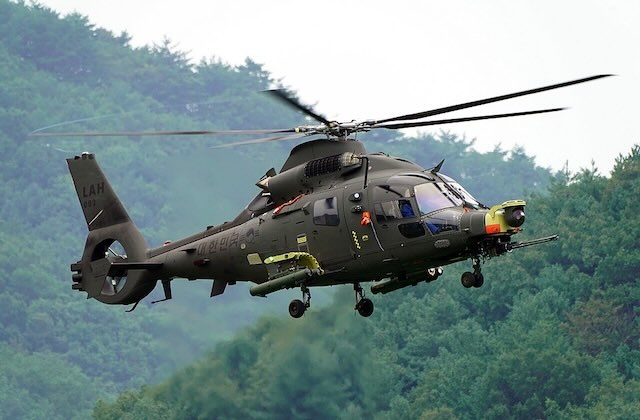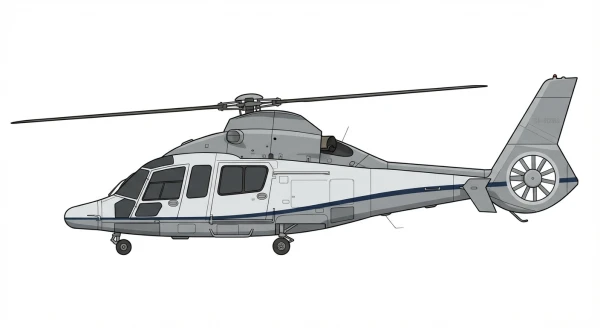H155 / EC155 Dauphin 2
Summary
| Category | Military Helicopters |
| Origin country | 🇫🇷 France |
| Manufacturer | Airbus Helicopters |
| First flight | 17 June 1997 |
| Year introduced | 1999 |
| Number produced | 116 units |
Description
Originally designated AS365 N4, the EC155 was developed from the Eurocopter AS365 N3 Dauphin 2 with the aim of significantly increasing the cabin space. Development began in September 1996 and the helicopter was officially announced in June 1997. The first EC155 helicopter, a modified Dauphin airframe, made its maiden flight on 17 June 1997, followed by the first pre-production EC155 B on 11 March 1998. The aircraft received safety certification by the French and German civil aviation authorities on 11 December 1998 and went into production soon after, with a price between US$7 million and US$8 million depending on installed equipment. In March 1999, deliveries of the EC155 B commenced, with the German Federal Police becoming the first operator. The EC155 B1 was later developed with uprated engines.
The EC155 B features a redesigned cabin offering a 30% increase in passenger space and a 130% increase in baggage hold volume compared to earlier Dauphin models. It incorporates a five-blade Spheriflex composite main rotor and a shrouded Fenestron tail rotor designed to reduce vibration levels. The helicopter is powered by two Turbomeca Arriel turboshaft engines with a dual-channel Full Authority Digital Engine Control (FADEC) system; the EC155 B is equipped with Arriel 2C1 engines, while the EC155 B1 uses uprated Arriel 2C2s. An anti-icing system permits operation in cold environments. The all-glass cockpit includes an 'Avionique Nouvelle' integrated digital flight control system with Eurocopter's Vehicle and Engine Management Display (VEMD) utilizing active matrix liquid crystal displays. A four-axis digital autopilot is integrated with the engine FADECs, and a Health and Usage Monitoring System (HUMS) is offered as an option. While primarily configured for civil roles, development into a Light Armed Helicopter (LAH) variant by Korea Aerospace Industries includes provision for a chin-mounted 20 mm cannon, side-mounted guided rockets, and countermeasures systems, along with the capacity to transport 6–10 combat troops. The standard EC155 does not incorporate internal armament or hardpoints for external stores.
The EC155 has seen service across various applications including passenger transport, offshore support, VIP corporate transport, and casualty transport. The German Federal Police were the first operators of the type, receiving deliveries in March 1999. The uprated EC155 B1 model was first operated by the Hong Kong Government Flying Service in November 2002. In addition to governmental and parapublic duties, the EC155 is utilized by private individuals, companies, and charter operators, frequently serving as an offshore transport helicopter for the gas and oil industry.
Main Variants:
-
EC155: The initial prototype helicopter, derived from a modified Dauphin airframe.
-
EC155 B: The first production variant, powered by two Turbomeca Arriel 2C1 turboshaft engines.
-
EC155 B1: An enhanced model featuring two Turbomeca Arriel 2C2 turboshaft engines and a higher Maximum Take-Off Weight (MTOW).
-
AS565 UC: A designation used for an early study of a potential military derivative of the EC155.
-
LCH/LAH: Improved versions of the EC155 developed by Korea Aerospace Industries, designated as the Light Civil Helicopter (LCH) and Light Armed Helicopter (LAH).
Technical specifications
| Version: EC155 B1 | |
|---|---|
| Height | 4.4 m (14.3 ft) |
| Length | 14.3 m (46.9 ft) |
| Service ceiling | 4,572 m (15,000 ft) |
| Empty weight | 2,618 kg (5,772 lbs) |
| Max. takeoff weight | 4,920 kg (10,847 lbs) |
| Climb rate | 8.9 m/s (29.2 ft/s) |
| Powerplant | 2 x turboprops Turbomeca Arriel 2C2 delivering 713 kW each |
Current operating countries
| Country | Units | ||
|---|---|---|---|

|
India | 5 (+199) | |

|
South Korea | 0 (+200) | |
All operators


